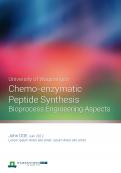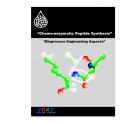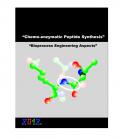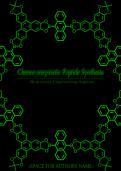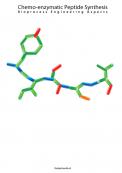Design for the cover of a PhD thesis
Contest details:
Needs:
I am looking for a design for the cover of my PhD thesis. The title is “Chemo-enzymatic Peptide Synthesis", and the subtitle is "Bioprocess Engineering Aspects".
The whole content of the thesis does not necessarily have to be presented in the design. I prefer a nice graphical design. It may be abstract. The text of the title, subtitle, and name of the author must clear. The backside of the thesis does not have to contain something graphical, but it may.
The front and backside of the thesis have a dimension of 17.5 x 25 cm (width x length). The design must however be 17 x 24 cm, since 5 mm of each edge will be cut off after printing. The thickness of the thesis will depend on the number of pages and the type of paper used. On the ridge of the thesis, the title, subtitle, and name of the author should be written.
The designer will be mentioned in the thesis.
Thesis content:
In thesis we studied the enzymatic synthesis of peptides, in our case dipeptides. Peptides are important in various disciplines: healthcare, nutrition and cosmetics. To synthesize these dipeptides, two amino acids are coupled together. This coupling reaction is accelerated / made possible by adding an enzyme. In addition, the reaction is carried out in organic solvent, or in other words, in the near-to-complete absence of water.
In the research we varied all kinds of conditions and looked at what the effect was of such a variation. We studied, for example, the effect of the quantity of water in the organic solvent, the effect of pH, and the effect of using different enzyme formulations.
Eventually we focused on one type of enzyme formulation: in this formulation the enzyme was attached to a bead (diameter: 150-300 μm). This type of enzyme formulation had the best properties according to our selection criteria. Before this enzyme can couple the two amino acids together, it must be moistened carefully with water; at the same time the surroundings of the enzyme must remain dry. We obtained these dry surroundings by adding molecular sieves. Molecular sieves are porous beads that selectively take up water. We used molecular sieve beads (diameter: 1 mm) and molecular sieve powder. The amount of molecular sieves needed is rather specific: too little leads to a wet organic solvent and therefore undesirable reactions, too much leads to dehydration of the enzyme and therefore inactivation of the enzyme. A dried out enzyme does not function well.
A balance between moisture and dryness is thus necessary for the coupling reaction to proceed well. Unfortunately it is quite cumbersome to keep this balance for a long time and the enzyme slowly dehydrates due to presence of the molecular sieves, with activity loss as a result. It is, however, possible to restore the activity of the enzyme by washing it with water. A disadvantage of using molecular sieve beads is that they seem to mechanically damage the enzyme. This happens if they roll on top of each other and clash with each other.
All this knowledge we have eventually combined to propose a process design to synthesize these peptides on a large scale.
Keywords:
Peptide synthesis, enzyme attached to beads, molecular sieves, balance between moisture and dryness, mechanical damage
Company description:
I am a PhD student. The studies for the thesis were carried out at the University of Wageningen, where I will also defend my thesis.
Target group:
People from academia.
Colors, favourites and other requirements
No restrictions.
Also an invitation should be prepared of 7 x 25 cm (design 6 x 24 cm). The invitation does not have to have its own design. A part of the design of the cover can be used for the invitation.
-
designer: NMGraphics
-
designer: glorifellow
-
designer: NMGraphics
-
designer: Thieu
-
designer: Thieu
-
designer: Thieu
-
designer: NMGraphics
-
designer: NMGraphics
-
designer: thuisje
-
designer: thuisje
-
designer: Wilko
-
designer: stanislav
-
designer: stanislav
-
designer: NMGraphics
-
designer: NMGraphics
-
designer: Laura Roman
-
designer: Laura Roman
-
designer: stanislav
-
designer: stanislav
-
designer: stanislav
-
designer: stanislav
-
designer: stanislav
-
designer: stanislav
-
designer: IMAZINE
-
designer: NMGraphics
-
designer: NMGraphics
-
designer: NMGraphics
-
designer: Tanaj
-
designer: Tanaj
-
designer: NMGraphics
-
designer: NMGraphics
-
designer: NMGraphics
-
designer: katjuxa
-
designer: katjuxa
-
designer: katjuxa
-
designer: katjuxa
-
designer: katjuxa
-
designer: katjuxa
-
designer: katjuxa
-
designer: katjuxa
-
designer: katjuxa
-
designer: IlonaH
-
designer: IlonaH
-
designer: dianaheijman
-
designer: tSiX
-
designer: Budget Media


























